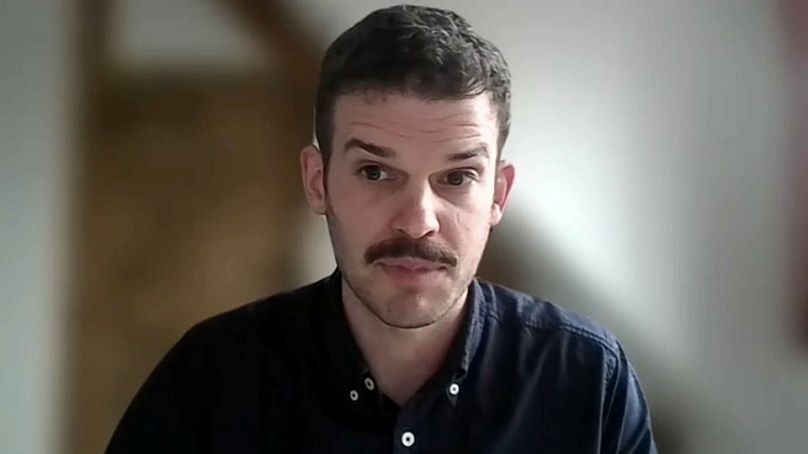Defence experts discuss the options available to Ukraine's generals and politicians for its counter-offensive against Russia's full scale invasion.
A major Ukrainian counter-offensive has been talked about for months.
The Pentagon documents, if they are to be believed, indicated that the assault was planned for 30 April. In late March, Ukrainian President Volodymyr Zelenskyy noted that the Ukrainian Armed Forces were not yet ready for large-scale operations. And Prime Minister Denys Shmyhal indicated in mid-April that a counter-offensive could be expected in the summer.
When will the operation start?
Western experts are more inclined to the prime minister's position: late autumn, or even early summer. According to Robert Callum, a lecturer in defence studies at King's College London, Ukraine is waiting for “good weather conditions so that they can conduct offensive manoeuvre operations. They'll also be trying to generate and sustain their own forces. But they'll also be trying to get ahead of Russian attempts to dig in and fortify their own position. So they'll be trying to balance those three things off. And I think the window of opportunity is within the next one to two months. So April, May, into early June.”
But even before that, there is no doubt that the Ukrainian armed forces will conduct battlefield reconnaissance and limited-scale operations to identify weaknesses in the Russian defence.
Possible plans by Kyiv
Ukrainian politicians and military officials say the ultimate goal should be the liberation of all Ukrainian territory - including the annexed Crimea and the territory of the separatist republics in the east of the country. But this is unlikely to be achieved in a single operation in the near future.
Zaporizhzhia
Experts suggest the most obvious target of a Ukrainian offensive could be a strike in the direction of the Sea of Azov, in the Zaporizhzhia region, roughly around Melitopol. This could split Russian-occupied territories in two, cut the land routes to Crimea and the Kherson region, and allow artillery to bombard the Crimean Peninsula, the naval base in Sevastopol and the Crimean bridge. This is the scenario most often discussed by politicians, the military and experts alike.
But the problem here for Kiv is that this strike direction is also obvious for Moscow. It has been repeatedly reported that Russian troops are seriously reinforcing their positions in the Zaporizhzhia region.
“The problem then is the availability of forces because they have then two open flanks, one in the west towards Crimea, one in the east towards the Donbas, and they have to cover these two open flanks against Russian counter-attacks against both sides,” said Gustav Gressel, Senior Policy Fellow, European Council on Foreign Relations.
"So the deeper they go, the more forces they will need to just cover the flanks and push the offensive forward. That might slow them down and that might also sort of swallow a considerable amount of forces."
Experts consider a more realistic objective for Kyiv to advance 30 kilometres into the Melitopol area - so that Russian supply routes are in the range of Ukrainian artillery.
Flanks: Kherson and Luhansk
Vladimir Putin's visit to the occupied regions of Kherson and Luhansk, which was announced on 18 April, has also been linked by many experts to possible defence preparations in the Russian flanks.
In the event of an offensive in these directions Kyiv will have to worry less about securing its flanks, but in each case there are disadvantages.
In the Luhansk region, Kreminna, Svatove, Severodonetsk and Lysychansk could be the focus of Ukrainian strikes: fighting in this area has been going on with varying success for a long time. However, the terrain there is wooded and rugged. Heavy Western equipment would be difficult to use in these conditions.
An offensive in the Kherson region could be the shortest route to Crimea for Ukrainian troops. But in order to do so they would have to force the Dnipro River. The most difficult thing, according to experts, will not be the formation operation itself, but the need to preserve and hold the crossings and bridges - which will undoubtedly become the most important target for Russian aviation and tactical missiles. Russian strikes against them could cut off and isolate the advancing Ukrainian forces.
Air and artillery superiority
An important factor in a successful offensive is air superiority: for strikes, protection of one's own troops and stretching, as one advances, the supply lines of the advancing group.
Kyiv has repeatedly spoken of a shortage of both combat and air defence aircraft. If the same Pentagon documents that have surfaced online are to be believed, Ukraine will run out of missiles for Soviet-era long- and medium-range air defence systems by May - that is if used at the current rate, even taking into account a possible offensive.
But this is about protection against Russian strikes on cities; for the front, according to experts, is not such a serious problem.
“Yes, they don't have air superiority, which is, of course, not ideal. But on the other hand, most of their reconnaissance is not done by aircraft,” said Gustav Gressel. “And also most of their strike missions are not done by aircraft like it's done in NATO. It's done by artillery, just like in the Russian army.”
For Cullum, it’s also a question of artillery.
"It's been a very artillery-intensive war," he says. "Both sides have used artillery and artillery ammunition in enormous quantities, both on the attack and the defence. So another problem they have to overcome is the supply of artillery ammunition, which is a key enabler of military success in this war."
Still, the lack of "frontline" air defence assets could significantly reduce the chances of the AFU if the Russian army makes extensive use of aircraft to counter the Ukrainian offensive, and here the West will not be able to provide significant support.
“Most of the air defence systems Ukraine gets are ideal to protect high-value targets like cities, air bases, et cetera," says Gressel. "The problem is Europe has very little mobile ground-based air defence system to protect its own troops because NATO's usually fighting on the air superiority. So here the problem with Western deliveries to Ukraine is also that Ukraine is now in demand for something that we barely have.”
On the intelligence side, Kyiv has the advantage of access to U.S. and NATO information (as well as information from pro-Ukrainians in the occupied territories). However, the leaks of secret Pentagon documents could be a disadvantage for Kyiv.
Intelligence
“The bad thing, of course, that happened from the American point of view is that the Russians now know how deep and with what means the American intelligence services can look into the Russian planning and Russian command and control structure, and they might adjust, for example, their codes or the encryption to prevent that,” Gressel says. “If that happens, and if Western intelligence at a time of the counter-offensive is less precise than it used to be, that would be a bad thing for Ukrainians .”
How can Russia counter the Ukrainian counter-offensive?
According to Western intelligence, Russia is fortifying almost the entire front line of Ukrainian territory, some 800km long. These strips, according to media reports, consist of several lines of anti-tank trenches, trenches, barbed wire, obstacles and all sorts of fortified firing points.
The quality of these barriers has been questioned by Western experts; nevertheless, even in this form they will be a serious obstacle for the attackers if they do not have sufficient artillery and engineering support.
As stated above, Kyiv will need many forces to support its flanks to develop deep breaks; these forces will inevitably be redeployed from other directions, which the Russian army could take advantage of to launch strikes in weakened areas.
Nuclear defence
The Kremlin has increasingly resorted to nuclear rhetoric in recent months, and at the end of March a decision was taken to deploy Russian nuclear weapons on the territory of Belarus.
Will the Kremlin decide to use nuclear weapons if the Ukrainian offensive is successful?
“Putin will definitely think twice or three times,” said Gustave Gressel. “To be honest, I don't believe that he will do it for any region, maybe except for Crimea, because the price is very high and the recipe for success is dubious.”
Will the counter-offensive bring a decisive result?
Ukrainian politicians periodically claim that a decisive counter-offensive in the spring and summer could bring the war to an end before the end of the year. Western experts are very cautious about this, while also paying tribute to the high morale of Ukrainians.
”If they've achieved significant success, they'll be in a position to force the Russians to the table and perhaps extract some kind of concessions, particularly if Crimea is threatened. Putin really won't want to lose Crimea because it's such a symbol of his regime’s success,” Cullum tells us. “If the Ukrainians haven't achieved much success, then I think they'll be facing a lot more pressure from their allies who are really at the limit of what they're willing to give in terms of assistance and equipment. And so Ukraine will probably face a lot more pressure to find some kind of status quo ceasefire.”













